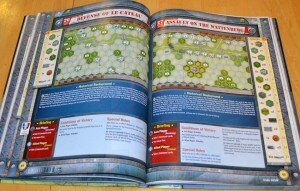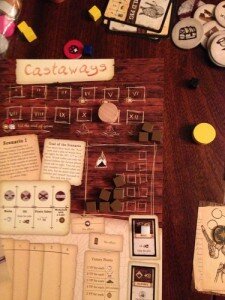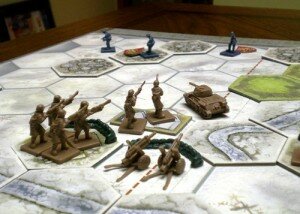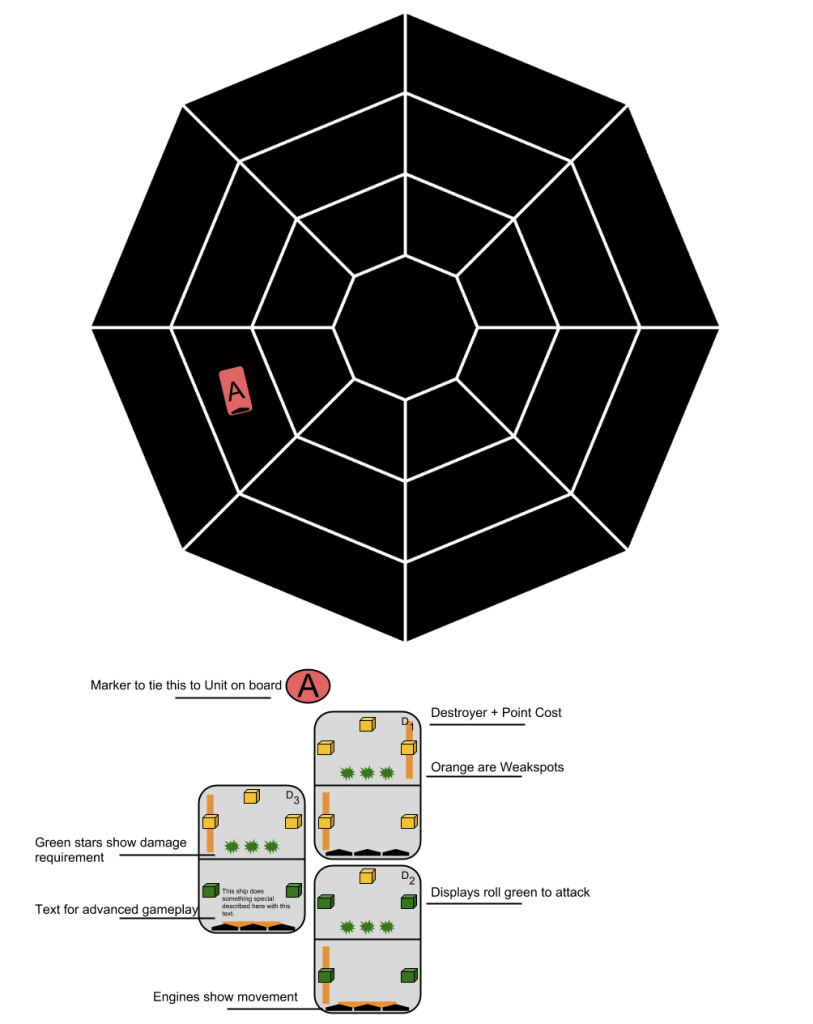Post by: Grant Rodiek
I’ve had an absolutely killer and productive week working on my games. When I have to conceive an idea from scratch, it’s really difficult for me. But, when I get to develop and iterate on an existing idea, I just hum with productivity.
I’m not ready to share too many details, but at a high level I wanted to jot down my thoughts on my process and where I’m taking Blockade.
Name Switcheroo
Firstly, Blockade is now Mars Rising. Is this a final name? Who knows, that’s for a publisher to decide. Blockade worked as a pun for my old, block driven design, but ultimately, is not a useful name and is ridiculously common. If you’re curious what I think entails a useful name…
A good game title:
- Conveys the theme of the game
- Provides a sense for what the player will be doing
- Is Unique
- Is easy to remember (and TYPE)
To briefly continue on this segue, there are exceptions to this. For the life of me I cannot remember how to type/spell Tzolk’in (had to look it up), yet it seems to be doing quite well. Plus, you can see dozens (if not hundreds) of similarly named games on the iOS App Store, which means lesser known titles get to piggy back (like parasites) on the current, similarly named leader.
But, back to the topic at hand. For now, I’m using Mars Rising. It definitely states sci fi, some form of conflict or ambition, and there will be massive space ships on the cover. There will probably also be a subtitle, because it’s all the rage. Most likely based on the campaign (of which I eventually hope there are millions).
Martian Introspection
Around the time of GenCon I was given the following feedback for the game:
- Consider a more feasible component than blocks
- Consider a method of allowing for ship and/or fleet customization
- Reduce the fiddliness
I thought on this for some time and identified a card-based method. This tested fine, but as a direct port from blocks to cards, it was merely fine at best. It wasn’t going to win hearts and minds. This pushed me to really look inwards at the game’s problems and opportunities to really make it magical.
- The color-based dice mechanic added too many components, worked, but was obtuse
- Tallying dice based on exposed sides of the ships was fiddly and cumbersome
- Weak spots had to go. Having to look across the table to someone’s setup was cumbersome.
- The formation mechanic needed to be strengthened, simplified, or discarded.
- I really needed to deliver on the promise of unique ships.
This honest look was the best thing that could happen for the game! If you must know, last week’s posts were derived from my efforts. Check them here and here. I really needed to evaluate how to make the game work properly and awesomely as a card-based game. I also needed the game to be smoother and more efficient to produce. Here are a few high level changes.
The Dice
The dice color mechanic is something I’m proud of, but ultimately, it was flawed. At the end of the day, you had yellow dice to shoot fighters and green dice to shoot ships. You had two steps to every roll, whereas dice are typically a one-step process. By two steps, I mean you had to roll to see if you had a hit, then combine hits to see if you damaged a target.
Recognizing that the dice were anti-fighter versus anti-ship, I gave ships two stats: lasers (anti-fighter) and missiles (anti-ship). Now, when attacking, you choose what you’re attacking and with what armament. You then tally the stats in the squadron and roll up to six plain six-sided dice.
- Anti-Fighter dice hit Fighter craft on a 3+. They hit capital ships with a 6.
- Anti-Ship dice hit Ships on a 3+. They hit fighters with a 6.
This gives the game the same balance and distribution of power I desired, without the complexity and color management. Big, slow, cumbersome missiles MIGHT hit fighters, but it isn’t likely. Weak fighters MIGHT damage capital ships, but it’s not likely. Six plain dice are also much cheaper than a pile of custom dice. A good change.
The Ships
Ships in the game used to be a series of sections that you’d either cover with other ships in formations or reveal to change your damage output (but also expose weak spots to incoming fire). It was neat and worked really well with blocks, but ultimately, I need to make a simpler game with that mechanic, not this one. I may do that at some point (and have ideas).
Ships have been completely overhauled.
This is the Destroyer Javelin. In the top left you can see its Shields, Lasers (anti-fighter), Missiles (anti-ship), and Engines (# of maneuvers). You then see its special ability that can be activated. On the right side you see the unshielded side. You flip the card once its shields are down and it loses its ability.
This format gives me FAR more flexibility in modifying the differences in ships and replaces the Fleet Action card mechanic. Ships can now have activated abilities, passive formation abilities (arrange your ships as such to get a bonus), or just better stats.
This supports fleet building and greatly enhances the replayability. I have a lot of ships.
The Rest
The game has changed in other ways, but I think these details are enough to convey the new direction. The core of maneuvering remains the same. You will still activate a single squadron, rotate them, move them, and attack. That’s why I’m confident this is the right step. I’m not discarding things that I spent months testing and refining. I’m enhancing them.
Oh, and the board is now finally round so it resembles a radar screen. I also added a fourth loop. The old board (24 spaces) was too tight. Now (32 spaces), there’s room to experiment and execute more devious maneuvers.
Fin
I spent the weekend updating the rules for the new mechanics and diagram needs and tweaking cards. I still need to create 11 more Battlecruisers and a pile of tokens and ship markers, but I’m close. I may have it ready for a prototype event I may attend Thursday. We’ll see.
My focus now is the campaign. I have 3 missions designed and I hope to have 15. First, I’m going to storyboard the 12 additional missions, which entails high level goals and plot points. Then, I’ll design the mechanics for each. Finally, I’ll write the story for each. Then, it’ll be a great deal of playtesting for balance and mechanics on the scenario.
If you’re interested in reading the revised rules, and I’ll happily share them. I’d love your input. Questions? Concerns? Thanks!












